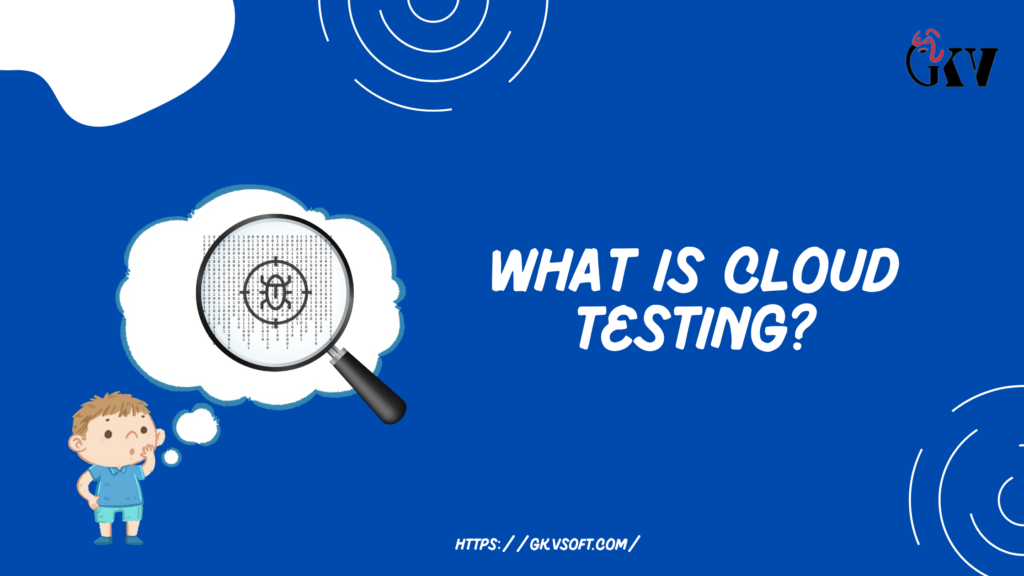Introduction
Cloud testing is a technique for testing software that uses cloud computing to test the applications from the viewpoint of performance, scalability, security, and functionality. Contrary to traditional testing that uses proprietary physical hardware, cloud testing is a flexible, cost-effective, and scalable environment where running the tests globally becomes more convenient. The ease of performing remote and concurrent tests on different environments has rendered it a valuable software development tool in today’s times.
With companies converting to cloud-based applications and services, the guarantee of smooth software operations on these emerging infrastructures becomes essential. Cloud testing enables organizations to simulate real-life application dynamics and scenarios, identify performance hotspots, and security hardening for release. It’s an insurance policy against improving user experience, minimizing downtime, and extending application reliability in all networks and loads.
Why Cloud Testing is Important?
Since cloud technology is being heavily used, organizations must ensure their software is able to support diverse environments, devices, and user needs. Traditional test environments take time and cost to set up and maintain. Cloud testing eliminates these problems through on-demand capabilities, scalability, and automation.
Cloud testing is beneficial for businesses developing multi-platform applications since it allows the testers to confirm compatibility in various browsers, operating systems, and network configurations. Cloud computing helps companies automate continuous testing and integration within DevOps pipelines, leading to faster software releases but improved quality and performance.
Main Features of Cloud Testing
Scalability Testing – To ensure that the application can handle varying user loads. Applications need to be tested with varying traffic levels to determine their ability to scale up or down based on the traffic.
Performance Testing – Testing the speed, responsiveness, and stability of applications on various cloud infrastructures. Performance indicators such as response time, throughput, and latency are tested to ensure a seamless user experience.
Security Testing – Identification of loopholes and data security against cyber attacks. It includes testing for unauthorized access, data loss, and encryption support.
Compatibility Testing – Application performance testing on different devices, browsers, and operating systems. Applications should be able to run uniformly on different hardware and software platforms.
Data Integrity Testing – Confirming the backup, recovery, and data consistency procedures function as intended. Confirmation the data is correct and secure in cloud transactions and synchronization.
Multi-Tenancy Testing – Ensuring multiple users can share common cloud resources safely without contention. It is necessary for SaaS applications where different customers use the same infrastructure.
Types of Cloud Testing
Functional Testing – Confirming all function and feature operation as wanted in the cloud. Functional testing prevents defects and application process mismatches from occurring.
Load Testing – Checking system performance when it is heavily loaded. Load testing prevents system expectation of behavior whenever multiple users use the application at the same time.
Stress Testing – Stress testing the application stability at full loads. Testing the conditions when the application is pushed to extremes beyond normal operating point in an effort to determine the vulnerabilities.
Disaster Recovery Testing – Disaster recovery mechanisms for backup and precaution in the event of a disaster being in perfect working order. Preventing the speed and efficiency with which an app will be recoverable in the event of crashing, data getting lost, or with vulnerabilities to hack attacks.
Latency Testing – Response measurement by changing different networks. Cloud applications must undergo performance testing in relation to change in the bandwidth and geospeacial locations.
Compliance Testing – Following industry compliance and cloud security standards. GDPR, HIPAA, PCI-DSS, and other security compliances’ compliance must be tested to protect data and remain regulated.
Advantages of Cloud Testing
One of the strongest arguments favoring cloud testing is that it is cost-effective. Traditional test environments are extremely expensive to maintain and entail advanced infrastructure. Cloud testing circumvents such a cost through pay-as-you-go, on-demand solutions that minimize expenses to their lowest level.
The second of the fundamental strengths is global accessibility. Cloud testing environments enable geographically dispersed teams to work and collaborate without any form of interference. Testers can use environments from across the globe, and scattered teams become a piece of cake to handle while interference-free coordination is facilitated.
Cloud testing also provides unmatched scalability. If a business needs to test an application under normal usage or mimic an odd traffic spike, cloud testing environments easily accommodate scaling test environments quickly and with little effort. Such flexibility is essential to businesses anticipating varying user load.
In addition, cloud testing offers real-time emulation, where the application can be emulated in different network conditions, geographies, and devices to ensure that it will function optimally under various situations. This is an aspect that provides better user experience and minimal post-deployment failure.
Quiet deployment is also its advantage. Leverage automation and parallel execution, cloud testing reduces test cycles, allowing for software release at an accelerated pace and continuous integration. This will enable businesses to stay competitive within the fast-moving digital era.
Challenges in Cloud Testing
Although there are some benefits, cloud testing also has some difficulties. One of them is security. As the applications are executed in the third-party clouds, the firms must ensure that their data are safe from unauthorized individuals and cyber attacks. Encryption, access controls, and secure authentication mechanisms must be implemented to prevent security threats.
Dependence on the internet is one of the problems. Cloud testing requires high-speed and stable internet connectivity, which is a problem in low-connectivity geographies. Variable or low-speed networks can prevent the execution of the tests and produce unreliable results.
Third-party provider limitations also impact cloud testing. Cloud providers impose different restrictions on configurations, and some real-world situations are challenging to replicate. Organizations must choose a provider wisely depending on their own test needs.
Latency is also experienced when applications are tested between two distinct cloud locations. Network latency impacts response times, and application design must be optimized for performance optimization.
Lastly, complexity in integration is a significant concern. Hybrid infrastructures are what most organizations have with cloud applications being in touch with on-premises infrastructure. These require integration and communication planning and strategic deployment.
Best Practices for Cloud Testing
Use Cloud-Based Testing Tools – Utilize AWS Device Farm, Sauce Labs, and BrowserStack for scalable testing.
Automate Repetitive Tests – Adopt continuous integration and continuous testing (CI/CT) pipelines for efficiency.
Test Across More Than One Cloud Provider – Test app performance across AWS, Azure, and Google Cloud for cross-cloud compatibility.
Monitor and Evaluate Performance Metrics – Monitor response time, error rate, uptime, and resource use for optimal performance.
Secure Data Encryption & Compliance – Use security best practices to protect sensitive information and meet regulatory compliance.
Emulate Real-User Scenarios – Test on various network conditions, devices, and browsers to ensure app strength.
Cloud testing is a revolution for new-generation software development with low-cost, scalable, and effective means of testing software. Utilizing cloud-based testing tools and best practices, organizations can ensure that their applications are reliable, secure, and high-performance across different environments.


